A core belief shared amongst many modern homesteaders is that traditionally-produced foods are often superior to their industrially-produced counterparts, particularly when it comes to meat. The horrors of industrial meat production—inhumane treatment of animals, health risks from meat raised in unsanitary conditions, and the use of antibiotics and hormones—underscore the value of raising your own.
This is not only a matter of ethics but also of economics given the rising cost of supermarket meat. However, for those new to meat production, the process can feel daunting, especially when it comes to slaughtering and butchering. Enter the Farmstead Meatsmith.
Brandon Sheard (aka. the “Farmstead Meatsmith”) is committed to humanely raising and harvesting livestock, preparing and preserving the meat in ways that maximize flavor and yield, and honoring the life of each animal by putting every part of their body to use. Unlike our fragmented, industrial approach to meat production, Brandon’s holistic approach means he is involved in every part of the process. He is the farmer, slaughterman, butcher, and charcutier; a true craftsman of his trade.
Brandon’s passion for old-world customs and traditions also influences his unique approach to animal husbandry, butchery, and processing, as well as his teaching methods. On his website, class descriptions emphasize the use of “your hands and antique cutlery” to transform various livestock—from beef and pigs to geese and lambs—into expertly crafted cuts and cured provisions for the family table. His background in English Renaissance literature is evident in his poetic style of speaking and writing, which complements his pre-industrial approach to what he calls “meatsmithery.”
He often refers to the “peasant economy” or the “culinary traditions of the premodern peasant,” which emphasize utilizing every part of the animal and preserving meat with minimal or no refrigeration. He believes that this approach is not only economical, but also yields some of the most flavorful meat. “The cures that hold winter’s famine at bay also taste very well. Thrift and extravagance kiss in the peasant kitchen,” Brandon writes on his website.
Though Brandon primarily raises meat for his own family, he also provides abattoir and butchery services for fellow homesteaders in his community who prefer not to handle these tasks themselves. Additionally, he teaches both in-person and online classes, attracting students from around the world who are eager to learn the art of slaughtering and butchering their own meat. His mission is to revive these traditional, old-world methods, empowering others with the skills, knowledge, and confidence to carry on these practices.”
A Short History of Meatsmithery
“My wife, Lauren, invented the term ‘meatsmith’ because we wanted a word that encapsulated the whole thing. We’re doing everything: raising, slaughtering, artfully and traditionally cutting the meat, preserving, and curing. Then we’re making charcuterie and cooking it, and even offering whole pig roasts and lamb roasts for weddings and holidays. All of those terms and specializations—butcher, slaughterman, abattoir—seemed insufficient to cover the range of services that we offer. So Lauren came up with the word ‘meatsmith’; like a blacksmith, but you’re a smith of all things meat,” explained
Brandon, echoing the description on his website, where he writes, “A meatsmith is one who practices all disciplines pertaining to the alchemy by which animals are turned into food.”
“It’s the nature of the industrialized mass production approach to agriculture that everything is fragmented. From farrowing to growing out, to transporting, to killing, to processing—it’s so fragmented and nobody ever communicates or gets together,” said Brandon. “You’ve got the specialists over here that are doing the slaughter and the butchery, and even within that process, we have this one specialist and this one guy with a draw knife, and a thousand times a day he removes the spare ribs from bellies. That is his one job. The whole thing is so fragmented. But when you step back and you do it on a home scale, you realize, ‘Oh, not only can I do this better, but this is such a simple narrative from living pig to pork chop or bacon that it easily fits in my brain. I’ve got it because this is a human prowess. We can nourish ourselves.’”
Brandon didn’t grow up on a farm, nor did he have any prior experience or inclination towards meatsmithery before getting a job at a butcher shop shortly after moving to Vashon Island, Washington, with his wife when they were just newlyweds. Little did he know when he walked into that butcher shop looking for work that it would dramatically alter the course of his life.
“I’ve never been shown how to do any of this. I didn’t go to culinary school. I grew up in suburbia in Southern California where it was all mountain bikes and surfboards. Then I went to college, and I didn’t know how to cook anything. I lived off of chips and salsa and Trader Joe’s wine during graduate school,” said Brandon.
“I had zero farm experience. My intent was to become an English professor. I was going to stay in school from cradle to grave, get my PhD, and become a professor. But I finished my master’s degree in humanities and then took a break. That’s when I met Lauren. She also finished her master’s degree in psychology and theology, and I was studying Renaissance literature. We simultaneously became disappointed and disillusioned with the academic world for various reasons,” he explained.
“Then we got married and moved to Vashon Island, and I was in desperate need of a job. I went around Vashon Town looking for work, and one of the places that had just opened up was a butcher shop. I walked in there and saw that they were selling wine. I found out that they were crushing the grapes with their feet. It was wild fermentation. They weren’t adding yeast; it was just whatever was on the grape skins. They were aging in old oak, and the wine was delicious. I saw that there was something authentic going on there—something fearless and traditional: fresh meat, traditionally fermented wine, a raw milk dairy, and traditionally-made cheeses. I thought this was the coolest thing. I just kept showing up there and pestering the owner for about two weeks until he said, ‘Alright, you might as well stay,’” said Brandon, adding that this butcher shop was where he learned everything, despite having no formal on-the-job training.
Mastering the Craft: Learning Through Necessity

“In order to sell things like pig heads, trotters, off cuts, and cuts that had skin on them to people at the farmer’s market, I had to teach our customers how to cook those cuts. That meant I had to learn how to cook. Then in 2008, the recession swooped in and the owner let go of everybody but four of us. Now there were four of us with a seven-cow raw milk dairy, making cheese, selling raw milk, slaughtering two or three pigs every week, three or four lambs a week, around 100 chickens a week, and making our own wine. We had a restaurant and a butcher shop, and sold all of this in Seattle at the farmer’s market. It was complete chaos. It really meant that if you wanted to learn how to do it, well guess what? No one’s doing it. So go ahead and step in and make it happen; make the production happen!
“It was in that context that I harvested my first animals. I think the first animal I harvested was a lamb with just a knife. The first pig I shot was when I was working with a friend. He just handed me the gun and said, ‘You shoot the pig. I don’t want to.’ I thought, ‘I guess we’re learning how to shoot pigs today.’ And that was the first time I did that,” said Brandon.
“The harvesting and slaughter of animals, ultimately, it’s a virtue. You have to build the habit of doing it. And while you’re doing it, you have to apply your reason to it each time to get better at it. And when you do that, it actually gets easier and easier because you do get better and better at it. That was the context in which I learned how to do basically everything,” he explained.
Trusting the old ways
While he never did pursue a career as a professor, Brandon’s academic background has helped to inform his approach to both food and farming. “My love for Renaissance English literature gave me the confidence to trust the old ways,” he said. “Our ancestors from this era, they were doing art, they were using their reason, and they were crafting things that are difficult to craft. This totally informs the way I do everything now,” he said.
“One of the main things I think produces beautiful literature is reverence for tradition, and especially for traditional limits. A sonnet is a perfect example of this, and this relates directly to bacon. A sonnet is a 14-line poem. It has to be five beats per line, and it has to follow a particular rhyme scheme. Then it’s even got a thematic prescription. You can’t just write whatever you want in a sonnet. You have to develop a conflict and then resolve it,” he explained. “The beautiful thing about limits is that if you write with perfect submission to those limits, it actually pulls something out of you that you didn’t know you were capable of; it broadens the horizon of your ability to write. If you write a sonnet according to the prescribed limits, you’ll read it and go, ‘I didn’t know I knew that!’
“Accepting the limits of our ancestors in curing bacon is exactly the same thing. We have this technology that allows us to make bacon any way we want. We can make it overnight. We can isolate synthetic nitrite and we can put it on bacon, and it penetrates so quickly in sterile, refrigerated environments that we get bacon in one night. Or you can forgo these technologies and embrace the limits of our ancestors and how they produced bacon: forgo nitrite, forgo synthetic chemicals or binders or coloring agents, forgo refrigeration even, and embrace smoking. Do it simply and traditionally, and you will produce a bacon that is seemingly more than your input. It blows your mind how delicious it is, and again, it’s really because of accepting the limits that your ancestors had. And when we just throw those off because we’re so technologically capable, we lose so much. So I think that’s the connection. It gave me the boldness to say, ‘You know what? We’re just going to do this the old way and see serendipitously what happens,’” said Brandon.
The Family Pig
One of the old-world customs that the Sheard family adheres to is keeping a ‘family pig.’ In fact, they keep a number of pigs, along with other animals, on their property in northeastern Oklahoma. But the pig takes center stage for the Sheards for several reasons. For one, the family pig was a crucial part of European cuisine. Pigs were a staple in the diet of both peasants and aristocrats alike due to their versatility, their ability to be cured and preserved in their own fat without refrigeration, and the fact that pigs could be raised in small quarters. This meant that even those without much land could keep a pig or two in their backyard. Pigs are also very economical animals; they aren’t fussy about what they eat, and will transform things like kitchen scraps and sour milk into delicious pork and lard.
“The pig has always been the common man’s animal because you don’t need a lot of land. It’s relatively new for us to pasture our pigs—though it’s fine if managed well, and farmers do that effectively. Historically, we only pastured pigs when we discovered a new continent with no fences and lots of nut trees, which is what happened here… Pigs have always been the backyard animal. They’ve traditionally been kept in benevolent confinement in a sty in the backyard, where they receive all the trimmings from the garden and the spoils from the kitchen. It’s entirely possible to raise a pig very well and humanely this way. This was the practice of the common man. He raised pigs because he didn’t have land. The lord of the manor could afford vast tracts of land to raise beef, but the backyard pig was definitely the peasant’s animal,” said Brandon.
“So much of our inheritance of the craft of making food is influenced by the pig. It’s in everything. Even in sausage, it’s largely the pig that makes it what it is, even when using other species. For instance, if you’re making sausage or pâté from beef or lamb, there’s likely to be pork caul fat, pork back fat, or some other product from the pig involved in that process,” he explained. “The larder—the place where you’d store your food before refrigeration—is called the larder because you preserved things submerged in pots of pig lard. Even Jewish people who couldn’t eat pork used goose fat instead (confit). That’s how you preserved food. And the goose is kind of the pig of the bird world; they’re very fatty, which is great. You get a lot of fat from a goose.”
On the Virtue of Slaughter
Whether he’s harvesting a pig, a goose, or any other animal, Brandon is as diligent about the slaughter as he is about the butchering process, if not more so. He gets to know his animals intimately to understand their nature, and uses that knowledge to make butchering day easier. He takes his time with the kill, waiting until the animal is perfectly calm, and lining up his shot for as long as it takes before pulling the trigger or making the first cut. When he makes the kill, he is swift and merciful, ensuring a quick and humane end to the animal’s life. He honors the animal through every step of the process and makes use of every part of it. For pigs, this includes collecting the blood for blood sausage, the innards for offal, and scalding and scraping the skin instead of skinning, which he says is contrary to a pig’s nature since they don’t have a hide like cows or sheep.
When asked how he processes the emotional toll of butchering his animals, he replied, “It gets easier, but that’s not because you’re becoming cold-hearted; it’s because you’re getting better at it, and your reason is taking more control over the situation than your emotions. The thing about emotions is that they obfuscate the reality of what’s going on. If you set out to harvest your backyard chicken or pig, you’ve already intellectually grasped that it is a good act. It’s a necessary and positive thing to do.
“You have affection for that animal, and you should, because you’ve sacrificed to give it a good life. Therefore, it’s consistent with that to give it a good and decisive death. In that moment, indulging in your own emotional state of sadness clouds your judgment and can cause more suffering to the animal. So it’s not cold and calculating. I think it’s because we tend to think of love as an emotion. It’s not. It’s an act of will. It might feel violent, but it’s not. It is a fulfillment, not an erasure of that animal’s nature, to kill it. Because then it’s going to nourish your family and your children, and you’d better cook it well, out of gratitude for the ultimate sacrifice that animal made,” said Brandon.
“We have to dismiss this idea that you’re being coldhearted if you [kill an animal] well and quickly and decisively. It is the opposite,” he explained. “At the same time though, I think sadness is fine. Death is always sad. But it’s a death that you are redeeming by using that carcass. So just go ahead, do your duty, kill quickly, kill well and consciously. That’s how I have always dealt with it at that moment. If you have an attachment to the animal, instead of focusing on your emotional attachment, you focus on making every move excellent. You deliver the kill excellently.”
Striving for Excellence in Meat Production
Excellence is certainly the standard that Brandon strives for in every aspect of his craft. In a world where industrial meat production often prioritizes profit over quality and animal welfare, Brandon’s meticulous attention to detail—from raising and nurturing the animals in his care to the final stages of butchering and preserving—sets him apart and serves as a reminder of what is possible when we return to our roots.
By embracing old-world methods and prioritizing humane practices, he not only ensures the highest quality meat, but also honors the lives of the animals he raises and the ultimate sacrifice they make. As more people seek alternatives to industrialized food systems, Brandon’s teachings and practices stand as a beacon of sustainable and humane meat production, preserving the nearly lost art of meatsmithery for generations to come.
To learn more about Brandon and the services and courses he offers, visit www.farmsteadmeatsmith.com

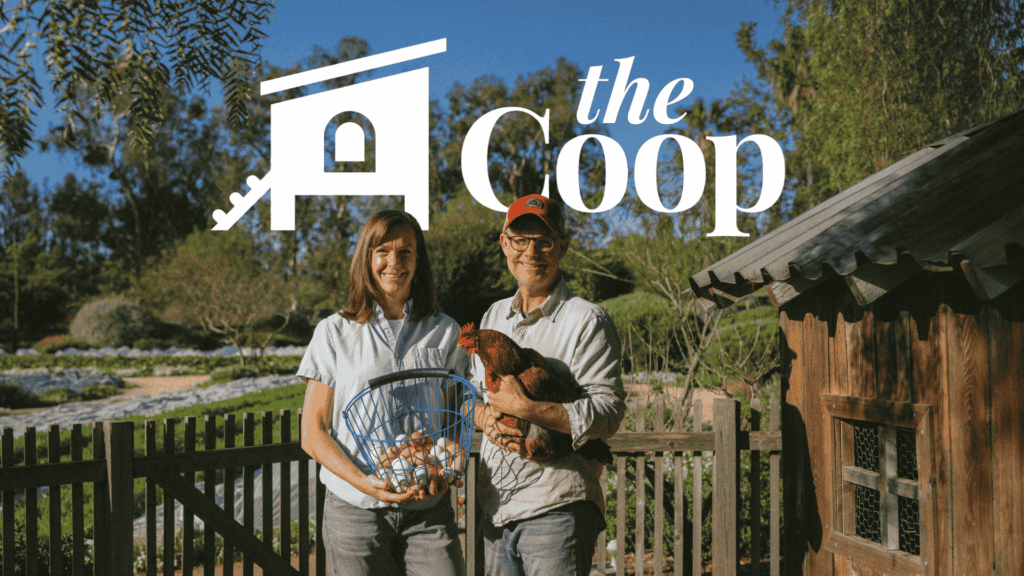

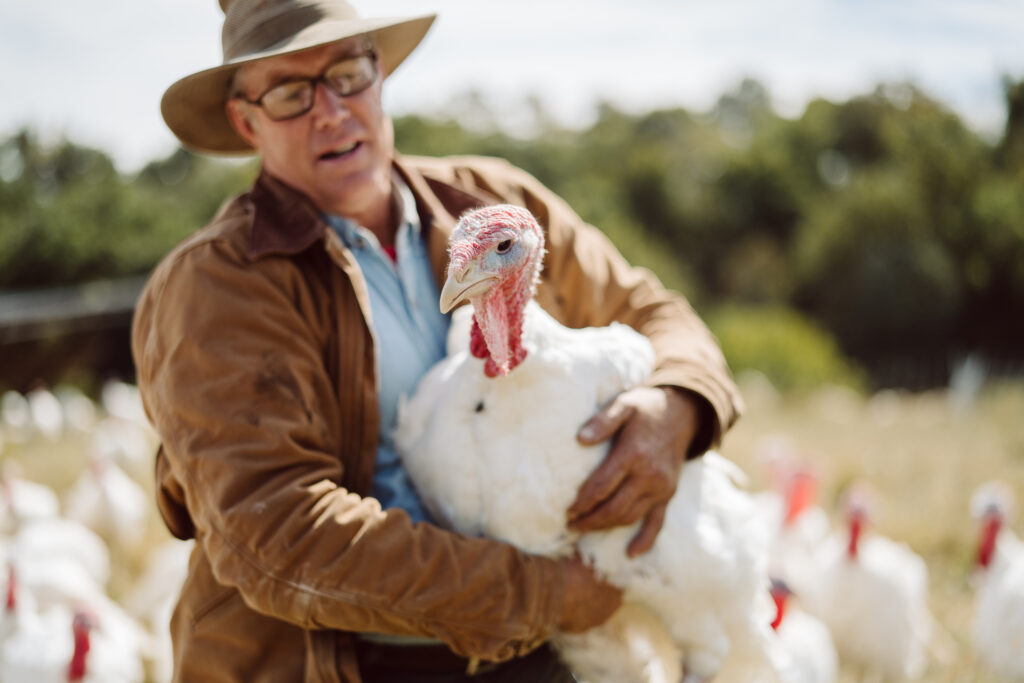

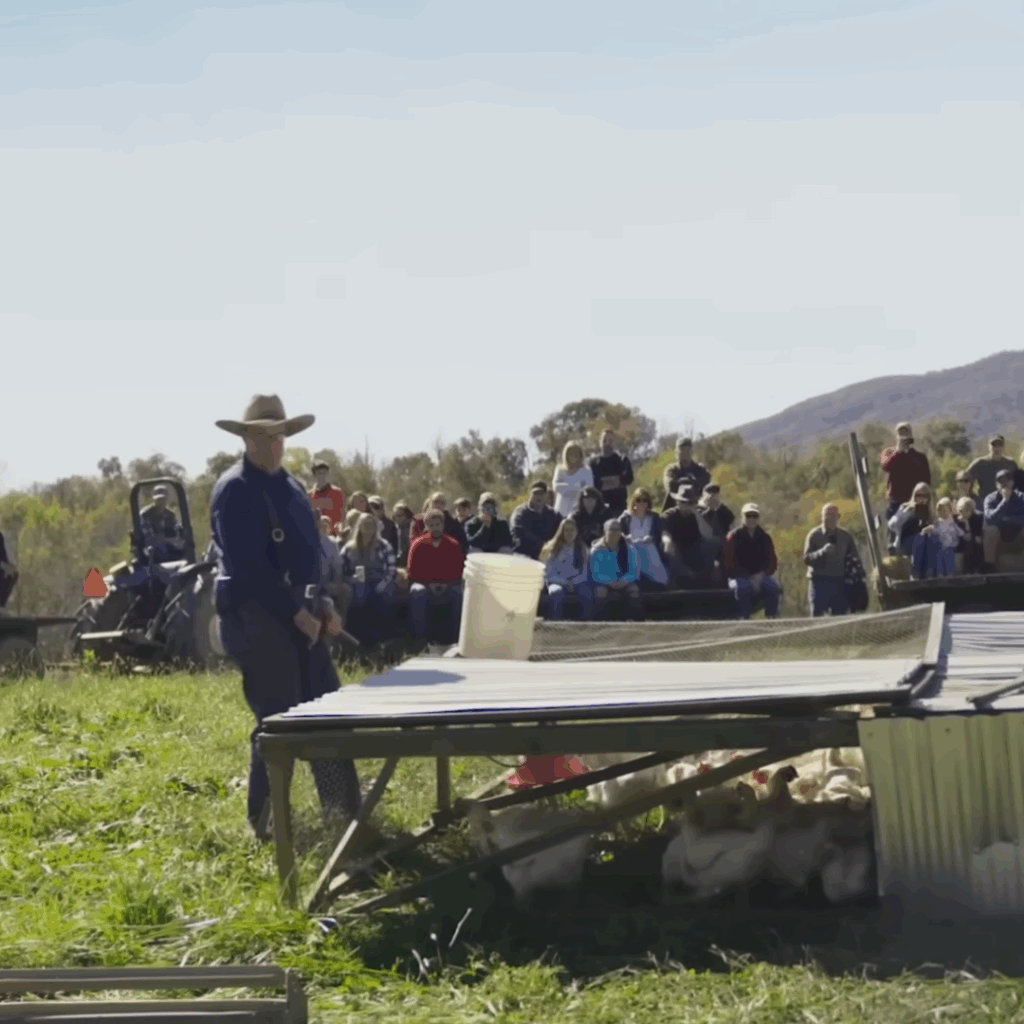
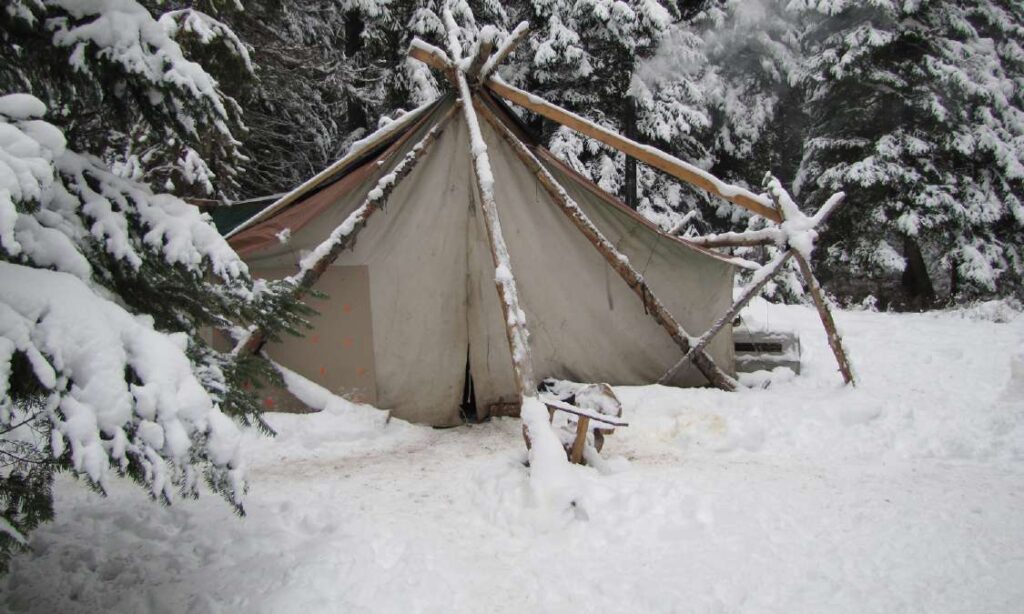
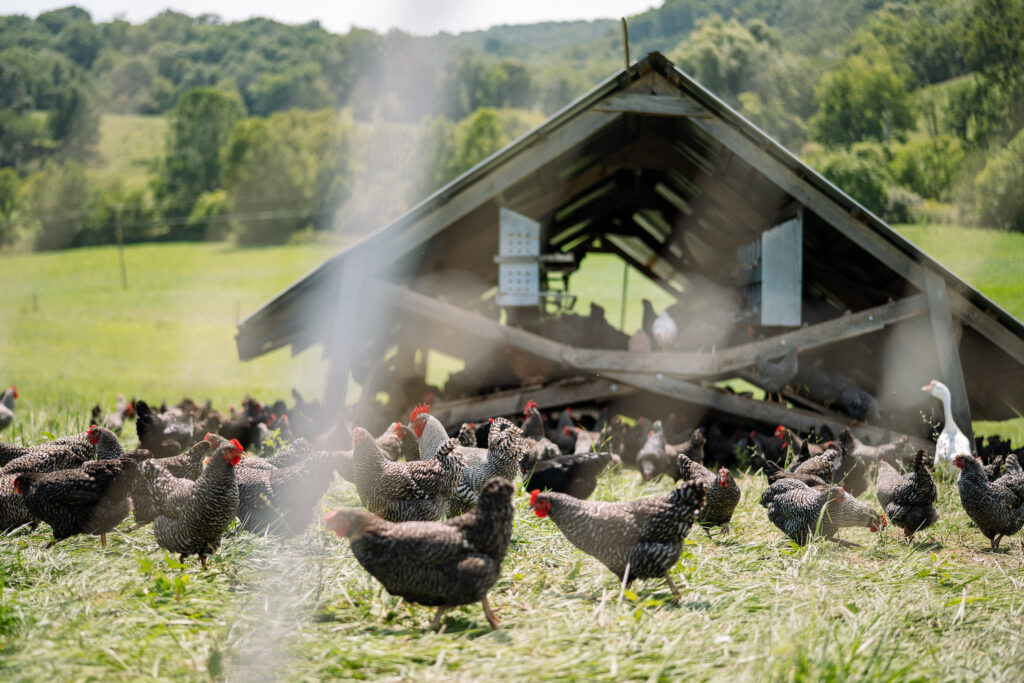
Leave a Reply